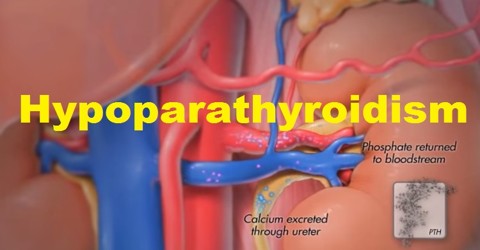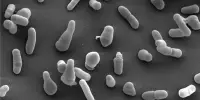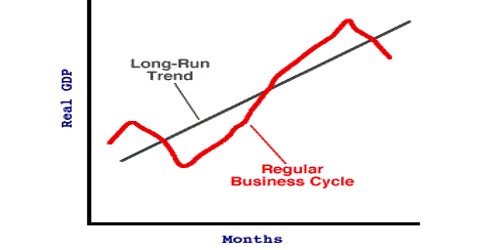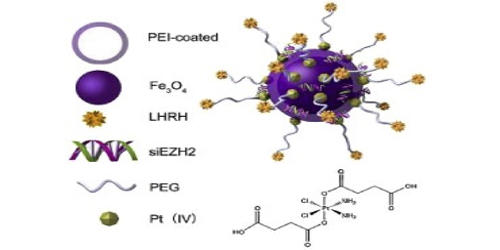About Hypoparathyroidism
Definition
Hypoparathyroidism is an uncommon condition in which our body secretes abnormally low levels of parathyroid hormone (PTH).
Everyone has four parathyroid glands located near or behind the thyroid gland. Each gland is the size of a grain of rice. The major function of PTH is to regulate the level of calcium in your body. It also controls the level of phosphorus and has a role in the production of the active form of vitamin D. All of these activities are required to maintain calcium balance.
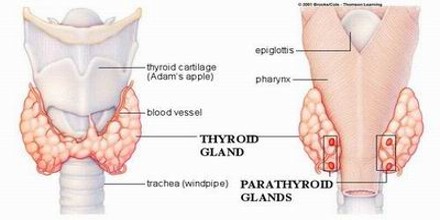
PTH plays a key role in regulating and maintaining a balance of our body’s levels of two minerals — calcium and phosphorus. The low production of PTH in hypoparathyroidism leads to abnormally low ionized calcium levels in your blood and bones and to an increase of serum phosphorus.
Treatment for hypoparathyroidism consists of taking supplements to normalize our calcium and phosphorus levels. Depending on the cause of your hypoparathyroidism, we will likely need to take supplements for life.
Causes and Symptom
Hypoparathyroidism is a condition in which the body doesn’t make enough parathyroid hormone (PTH), a hormone that regulates the amount of calcium and phosphorus in your body’s bones and blood. The most common cause of hypoparathyroidism is injury to the parathyroid glands, such as during head and neck surgery. Parathyroid glands are small endocrine glands that are located in the neck behind the thyroid gland.
The causes of hypoparathyroidism include:
- Injury to or removal of the parathyroid glands
- DiGeorge syndrome, which is a genetic disorder that affects development of certain body systems
- Genetics
- Autoimmune disease
- Cancer radiation treatments
- Low magnesium levels
Hypoparathyroidism is very rare. It is different from hyperparathyroidism, a much more common condition in which the body makes too much PTH.
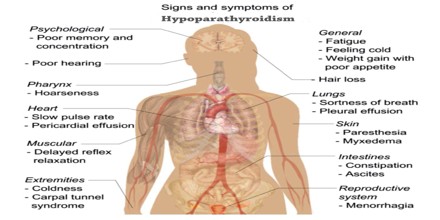
Signs and symptoms of Hypoparathyroidism can include:
- Tingling or burning (paresthesias) in your fingertips, toes and lips
- Muscle aches or cramps affecting your legs, feet, abdomen or face
- Twitching or spasms of your muscles, particularly around your mouth, but also in your hands, arms and throat
- Fatigue or weakness
- Painful menstruation
- Patchy hair loss, such as thinning of your eyebrows
- Dry, coarse skin
- Brittle nails
- Headaches
- Depression, mood swings
- Memory problems
Risk Factors of Hypoparathyroidism
Factors that may increase your risk of developing hypoparathyroidism include:
- Recent neck surgery, particularly if the thyroid was involved
- A family history of hypoparathyroidism
- Having certain autoimmune or endocrine conditions, such as Addison’s disease — a condition characterized by a deficit in hormone production by the adrenal glands
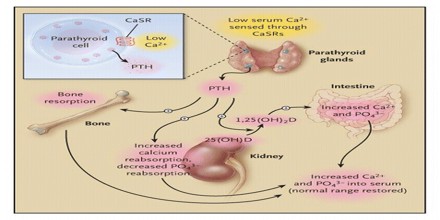
Diagnosis and Treatment
Diagnosis is by measurement of calcium, serum albumin (for correction) and PTH in blood. If necessary, measuring cAMP (cyclic AMP) in the urine after an intravenous dose of PTH can help in the distinction between hypoparathyroidism and other causes. Differential diagnoses are: Pseudohypoparathyroidism and pseudopseudohypoparathyroidism, Vitamin D deficiency or hereditary insensitivity to this vitamin (X-linked dominant), Malabsorption, Kidney disease, Medication (steroids, diuretics, some antiepileptics).
Other tests include ECG for abnormal heart rhythms, and measurement of blood magnesium levels.
The goal of treatment for hypoparathyroidism is to restore the body’s calcium and phosphorus to normal levels. Calcium carbonate and vitamin D supplements are the only currently approved treatment. However, NIH studies have shown the investigational drug PTH to work well as an alternative therapy.
If hypoparathyroidism is diagnosed and treated early, outcomes are usual good and the body grows normally. If hypoparathyroidism is left untreated, complications can include a blocked airway due to severe muscle spasms, stunted growth, malformed teeth, development of cataracts, and calcium deposits in the brain.
